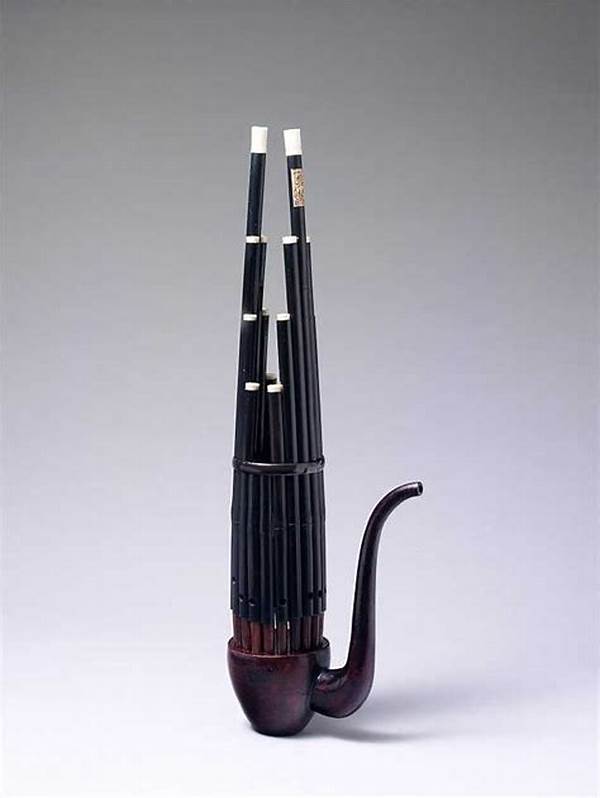In a world filled with modern melodies and synthetic beats, the soulful and captivating tones of the Chinese traditional music instrument sheng stand as a testament to ancient craftsmanship and musical tradition. Imagine a world where every note tells a tale of mystery, culture, and heritage—a world brought to life by the sheng’s enchanting sounds. This ancient mouth organ, known as one of the oldest Chinese musical instruments, weaves a rich tapestry of sound that transports listeners to a bygone era.
Read More : How To Store And Care For Delicate Instruments
The journey of the sheng is as enthralling as its sound. Originating more than 3,000 years ago, this instrument embodies the creativity and innovation of ancient Chinese musicians. Intricately designed with a series of bamboo pipes and metal reeds, the sheng produces harmonies that are both haunting and mesmerizing. But what makes this instrument truly unique, and why should you be interested in its ancient mouth organ sounds? Let’s embark on this fascinating exploration together.
The Allure of the Sheng: An Historical Glimpse
The sheng isn’t just another musical instrument; it is a cultural artifact that delves deep into the roots of Chinese history. Its design, reminiscent of the phoenix wings, signifies the elegance and majesty found in ancient Chinese art and symbolism. The instrument’s capacity to produce chords, rather than single notes, sets it apart from many traditional wind instruments, offering a unique sound that continues to enchant both musicians and audiences alike.
With a rich history embedded in royal courts and ceremonies, the sheng has played a pivotal role in traditional Chinese orchestras. Famous sheng music performances have been recorded throughout history, and its presence has been documented in numerous historic texts. Its ability to accompany other traditional instruments like the erhu and guzheng adds depth and texture to Chinese musical compositions.
Why the Sheng Holds Cultural Significance
At the heart of its cultural significance, the sheng represents harmony and unity. Its sounds are used to create serene and atmospheric settings in Chinese opera and theater. The instrument’s unique construction allows it to emit both the melody and harmony simultaneously, making it indispensable in ensemble settings. This harmonic complexity makes it a favored instrument in traditional performances and a point of intrigue in contemporary music explorations.
Modern Revival and Interest
In recent years, there has been a growing resurgence of interest in traditional instruments like the sheng. As cultural heritage becomes more intertwined with global music trends, musicians are discovering new and innovative ways to integrate its sounds into contemporary compositions. Today, the sheng can be heard in fusion music genres, thereby preserving its legacy while introducing it to a new generation of music enthusiasts.
The Artistry Behind the Sheng’s Unique Sounds
To appreciate the sheng’s music fully, one must delve into the intricate craftsmanship involved in its creation. Unlike modern instruments facilitated by technological advancements, each sheng is handmade with precision. This craftsmanship involves selecting quality bamboo for the pipes, crafting the reeds, and tuning each pipe meticulously to ensure perfect harmony.
Understanding the Structure of the Sheng
The sheng is typically composed of multiple vertical pipes (often 17, 21, or 24, depending on the type) attached to a base where air is blown through. Each pipe has a reed, and by covering certain holes, different notes are produced. This mechanism allows the sheng to play chords and create a polyphonic sound—a feature almost revolutionary for traditional wind instruments.
Musicians’ Testimonials
Many musicians who have mastered the art of the sheng express a deep emotional connection to this instrument. Renowned Chinese sheng player Wu Wei once remarked, “Playing the sheng is like channeling the voices of my ancestors; it transcends time and space.” Such testimonials highlight the sheng’s powerful impact not only as a musical instrument but as a vessel of historical storytelling.
Read More : Best Instrument Indonesia Admired By Global Ethnomusicologists
Engaging with the Sheng: How to Experience Its Magic
Experiencing the sheng’s authentic sound is an opportunity not to be missed, whether you are an aficionado of traditional music or simply exploring new musical horizons. Here are some ways you can immerse yourself in the world of the sheng:
Exploring the enigmatic sounds of the sheng can be a transformative experience, enriching your musical journey with cultural insight and emotional depth.
Bringing the Sheng to Modern Audiences
One might wonder, how does the ancient sheng find its place in today’s music scene dominated by electronic and pop influences? Its adaptability is key. By pairing the sheng with contemporary instruments and genres, musicians create a fusion that respects tradition and embraces innovation. The unique polyphonic capabilities of the sheng allow it to blend seamlessly in various musical settings, providing endless opportunities for creativity.
In Summary: The Enchanting Legacy of the Sheng
The Chinese traditional music instrument sheng is more than just an ancient mouth organ; it is a bridge connecting past and present, capturing the essence of cultural heritage while propelling its sounds into the modern world. Its ability to convey emotions and stories through music makes it a cherished member of the musical community, always ready to inspire and intrigue.
Embracing the Timelessness
As we look to the future, the sheng stands as a reminder of the timeless qualities of music that transcend cultural and temporal boundaries. It symbolizes the beauty of traditional craftsmanship and the ongoing human quest to create and connect. This ancient mouth organ sounds a call to embrace diversity and unity in music—a harmonious blend of notes that have withstood the test of time.
In exploring the world of the sheng, one finds storytelling and music intertwined, inviting all who listen to engage with a legacy of sound that is as relevant today as it was centuries ago.
